Check out some books by your tutor Fiona Veitch Smith … (click on the book covers to find out more)
 This is the second session of eight in our online creative writing course, in which we’ll be exploring how to write a short story. Now that your creative juices have been stirred, you should be ready to start writing; if not, go back and try some of the exercises in the first session of this course, releasing your creativity.
This is the second session of eight in our online creative writing course, in which we’ll be exploring how to write a short story. Now that your creative juices have been stirred, you should be ready to start writing; if not, go back and try some of the exercises in the first session of this course, releasing your creativity.
Writing short stories versus writing novels
Most new prose writers have the beginnings of at least one novel in their drawer. They will get to chapter three or four and give up because they don’t have the skill, confidence or stamina to carry on. If you’d never run a marathon you would be a fool to enter the Great North Run without first attempting some shorter distances. Short stories are the best place for new writers to hone their craft. But don’t be fooled, they’re not necessarily the easiest option. It takes a great deal of skill to write a short story that’s effective – you will have to curtail any tendency to ramble on. And not all writers need to be novelists either. I believe F. Scott Fitzgerald was quite comfortable as a short story writer and only produced the occasional novel out of pressure from his publisher, while the great Raymond Carver never wrote a novel in his life.
Short stories are an endangered species
There was once a time when every magazine carried some short fiction. Sadly, that time has passed. Now, apart from some weekly women’s magazines in the UK, short stories have retreated between the dusty covers of literary publications. The situation has become so bad that a group of leading writers and publishers got together to start the Save the Short Story Campaign and are beginning to make good progress.
Short stories appear to be doing far better across the pond in America where the art form is more respected and accessible to ‘ordinary’ readers. However, there are signs that this may not continue. Read Stephen King’s thoughts on the decline of the American short story. You can check out Writer’s Market for a list of North American short story outlets.
How long is a short story?
So what is a short story? Short stories can be anything from 500 to 6000 words. Anything under 500 words tends to be labelled ‘flash fiction’ or ‘micro fiction’ (although some would argue it’s still a short story) and anything over 6000 is moving into novelette or novella territory. I would argue that a short story is something that can be read comfortably in one sitting and doesn’t leave you starving or bloated. Popular magazines tend to accept work of between 1000 – 2000 words, more literary ones go for longer. Children’s short stories tend to be under a thousand words. If you would like to write for younger readers, check out some of my articles on writing for children.
A short story is a slice of life
A short story is a slice of life. As such, you should narrow the time frame and geographical location of the piece. One plot, two or three characters and no more than two locations (one would be better) should fit into a short story. If this is too tight a fit perhaps you should be writing a novella or a novel.

Fig 1: Short story time span
How to begin a short story
Start your piece as close to the turning point or climax of the story as possible. Most writers take a paragraph or so to find their feet. On a second reading they will delete the first paragraph as unnecessary exposition or padding. Your first sentence is crucial; it should be filled with energy, intrigue and forward momentum. The reader should be stopped in their tracks and not be able to turn away until they’ve read the whole thing. The first sentence should raise questions that need to be answered. Take for example these openers:

- ‘My mother was making me a dress.’ (From ‘Red Dress – 1946′, Dance of the Happy Shades)
- ‘General Sash was a hundred and four years old. ‘ (From ‘A Late Encounter With the Enemy’, The Complete Stories)
- ‘Fact is the car needs to be sold in a hurry, and Leo sends Toni out to do it.’ (From ‘Are These Actual Miles’, The Oxford Book of American Short Stories)
Exercise 4: Jot down questions that arise from these openings and what, if anything, makes you want to read on. If you can get hold of copies of the stories do so. Ask yourself: were the questions answered? Was I satisfied with the answers? Was the answer what I expected?
Exercise 5: Use a trigger image, phrase or thought (see Releasing Your Creativity) then write down a leading, opening sentence. What questions might be raised? How might you answer those questions in a short story? What setting would be most appropriate to answer the questions? How long will it take for the question to be answered? Can you think of any characters that might help you tell the story and answer the question? (We will be looking at building a character in a future session and try writing another story from their perspective). Look over your answers and see whether or not the outline of a short story is emerging. If not, try another sentence or another trigger image.
Beginning, middle, end
Every short story should have an opening that is developed in the middle to build tension which reaches its climax towards the end, after which there is a rapid conclusion. For those of you who have studied any dramatic or literary theory you will recognise this progression as typical Aristotlean Three Act Structure. In a short story you should not spend too much time in the ‘first act’ where development, setting and exposition take place, and should start your narrative as close to the inciting incident (aka point of change, first turning point or initial crisis) as possible. The inciting incident is the event which upsets the apple cart of the characters’ ordinary world and compels them to act in a certain way in order to bring balance or closure to their disrupted environment. In the Red Dress it is the school dance which the narrator fears will bring humiliation. She then tries to fake illness in order to get out of it, then, when this fails, tries to remain as invisible as possible at the dance. We will look at how a character acts to bring or avoid change change in a future discussion.
Exercise 6: What is the ‘ordinary world’ of your opening sentence? Remember, this may be an abnormal world to most readers, but it should reflect the status quo of your characters before it is challeged or shaken up. What challenges this status quo? This is your inciting incident. Using only three paragraphs (50 – 60 words each) or less, start writing your short story. In this short space you should establish your ordinary world, your main character and the inciting incident of your story.
Obstacles, setbacks, climax and resolution
This is the outline of the rest of your story. Imagine a graph of building tension.

Fig 2: Dramatic development in three act structure
Your story should follow that arc by allowing your character to face obstacles, setbacks and minor victories on the way towards reaching the dramatic climax and bringing resolution.
Exercise 7: If you are graphically minded draw yourself a rough graph or jot down the beginning, middle and end of your story. Now write the story and fill in the gaps. If you’re not so graphically minded, just jot down a few key phrases or events that might carry your story forward to a possible conclusion. Don’t worry, this isn’t cast in stone, and you can change the beginning, middle, end and anything in between at any time. Many writers just write to find their voice. That’s fine. Once you have a first draft, go back and see if it has some kind of structure or arc. If not, you may have to tweak it a little.
I hope this has given you some insight on how to write a short story. Happy writing!
The next creative writing course session is writing from a point of view.
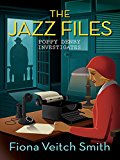
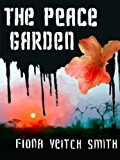
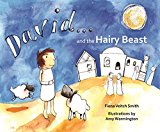
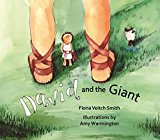
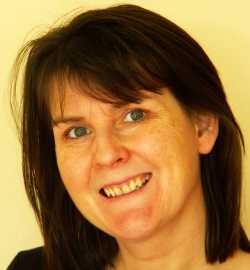 Welcome to The Crafty Writer's free online creative writing course, presented by Fiona Veitch Smith, a freelance journalist, editor, author, playwright, screenwriter and writing teacher. I hope that you'll see a dramatic improvement in the quality of your writing as you work through this course.
Welcome to The Crafty Writer's free online creative writing course, presented by Fiona Veitch Smith, a freelance journalist, editor, author, playwright, screenwriter and writing teacher. I hope that you'll see a dramatic improvement in the quality of your writing as you work through this course. 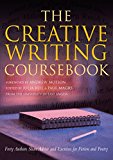
Hi Fiona,
This week was challenging for me.
I couldn’t get hold of the stories you mentioned.
It made me think again about the main character in the novel I am writing.
Thanks
Hi Sue. Sorry you couldn’t get your hands on the stories. I hope you still managed to get something out of the session though. The opening line of each story is actually listed above eg ‘ My mother was making me a red dress … ‘, so even without having read the whole story you can write down any questions that arise from these opening sentences. In fact, you don’t need to read the stories at all (if you do though, you will discover how the questions that are raised are answered.)
Thanks Fiona
I did manage to do all the exercises.
I just wasn’t very happy with my results.
They seemed pretty poor to me.
Nothing to do with the course just me.
Sorry about that Sue. We all have good days and bad days. Hopefully the muse will make an appearance soon. What genre novel are you writing?
I’m trying a not too gritty crime novel.
I have an outline and character bios and have completed the first 9,000 words.
I’ve already completed one other novel (a main stream family relationship story) but I could see it was not good enough. I put it aside. I may go back to it later but in any case it was a good learning experience.
YOu should increase your marketability with a crime novel. Family relationship stories tend to be limited to a female readership. Is your protagonist male or female?
Female and recently divorced.
Her father is a retired ex cop.
I have started to write but have just realised that her relationship with her father is prickly.
This means that I have the feeling that some of the earlier stuff is not quite right.
I have an almost irresistable urge to go back and change things.
I have just started on this site today and I am enjoying it very much. I have a novel going but am very unsure of myself and this is helping a lot. This exercise made me realize serveral things I needed to get me moving again. Thanks so much!
Hi TJ. Welcome to the course. I hope you get a lot out of it.
Fiona
Ihave enjoyed learning about the short story, the excercises have certaily given me plenty of ideas. I am now ready to proceed to the next part of the course.
Good luck with it Jean. Glad you’re finding your way around now
Aw, I made myself cry and smile. Happy with the result of this exercise.
Aren’t you glad you didn’t give up?
Pingback: 4th Edition of Author Love
Pingback: The Mad Editor’s Round-Up #14 | Diary of a Mad Editor
Pingback: InkyBlots January 2010 Blog Carnival! | InkyBlots
Pingback: Just Write Blog Carnival July 17, 2009 Edition | Incurable Disease of Writing
OMG! This has really helped me to become way more organized and in my opinion (of course) more polished. My first piece I’m still working on as I leave this comment, but I can see a world of difference as I write and gain ideas to where the story is going. I am so glad I came acroos this site today! Thank you so much for providing this site to ppl like me that desire to write and learn how to but dont have money for schools and courses.
If I did I’d be among your MANY students.
From Keta
You’re most welcome Keta. Hope all goes well with the story!
Fiona
hai ..
I Anto from Indonesia
I love reading your articles. really helped me in writing short stories.
greetings from my
thanks
You’re welcome!
Hi I would like to take a course on creative writing.
Thanks
Hi Gan, this link should answer all your questions http://creative-writing-course.thecraftywriter.com/frequently-asked-questions/